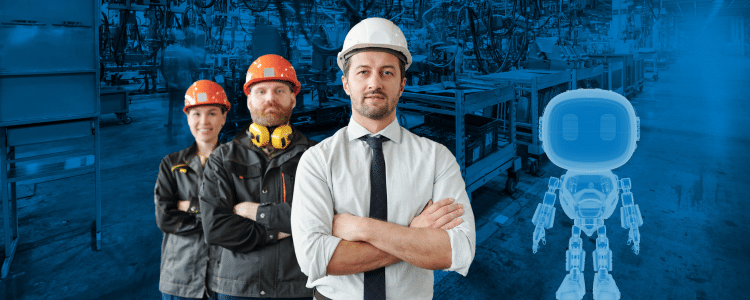By nature, digital transformation is an enterprise-wide initiative. It affects every employee, on every level. So, when it comes to change management, you might view the effort with the same widescale lens.
However, it’s important to view change management not just on the organizational level but on an individual employee level, as well.
Individual change management is an essential part of any digital transformation or ERP implementation. In fact, an organization is only truly ready for new processes and technology when each individual team member is knowledgeable and enthusiastic about the future state of their role within the organization.
Change Management Case Study
The client recognized their need for more comprehensive change management, so they asked us to fill in the gaps. We developed a robust communication plan to supplement the vendor’s communication approach.
Why is Individual Change Management Important?
Why should your company embrace an individual change management model? In short, it’s the missing link in most change-related activities. Without considering how individual team members are receiving your messages and actions, you could spin your wheels on all the wrong activities.
The right activities will only come to light when you take the time to understand the individual impacts of change. In other words, you must consider how the change will affect employee workflows, perspectives, and behaviors. With this understanding, you can determine which activities will be most effective.
Let’s look at a few other reasons why you should make individual change management an integral part of your ERP software implementation:
1. Individual Successes are Company Successes (and Vice Versa)
Transformational change is only valuable if each employee uses the new ERP solution. If even one employee resists change, then that pushback has widespread consequences.
Individual change management is about recognizing and addressing individual resistance because one poorly executed workflow, or a workflow an employee ignores altogether, can have a domino effect when it comes to downstream processes.
2. You Can Avoid Unnecessary Change Work
While change activities are critical, you don’t want to invest time, money, and energy into activities that will be ineffective.
Consider the effort of developing an elaborate, expensive training program only to have few people attend. Performing such change activities for the sake of saying you did them doesn’t do anyone any favors.
Instead of focusing on activities that take a generic approach, you should focus on activities designed to address change on an individual level. These activities will have a more lasting impact.
3. Individual Change Management Shifts the Message
Just as change activities can be too generic, change management communication can also be overly generic.
For instance, most email updates and conference room meetings primarily focus on status updates. These conversations answer questions such as:
- What has the project team been working on?
- What are the next steps?
- What will the finished product look like?
While these are important topics, they can leave employees asking, “What’s in it for me?”
An individual change model turns the conversation inward and puts a greater emphasis on building awareness and knowledge.
4. Individual Change Management Creates a Framework for Success
If you move forward with an individual change management strategy, you’ll be able to more easily gauge whether your efforts were successful. This is because this strategy involves outlining desired outcomes and putting a framework in place to meet them.
Without this approach, it’s challenging to measure the effectiveness of your change management efforts.
How to Succeed at Individual Change Management
This three-phase approach is designed to occur in tandem with higher-level organizational change management.
The three phases include:
1. Preparing for Individual Change
Preparation occurs on an individual level. Key tasks include defining required changes, anticipating resistance, and developing risk analyses.
2. Managing Individual Change
This involves taking a customized approach based on the results of the preparation phase. Key tasks include developing a communication plan, identifying sponsors, and planning end-user training.
3. Reinforcing Individual Change
Reinforcement helps ensure that individuals are responding to the change as expected. Key tasks include collecting feedback, auditing compliance, and identifying gaps.
Understanding Individual Change Within an ERP Project
One employee has the power to alter the course of a large-scale transformation. Individual change management recognizes this.
By focusing on individual change management, you can ensure everyone is on the same page before you turn it.
Our change management consultants can help you design the right change management approach for your organization. For more information on some of the individual-focused activities we typically recommend, request a free consultation below.














